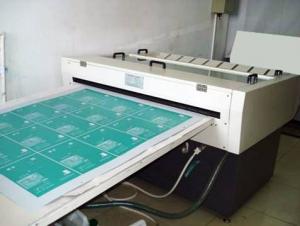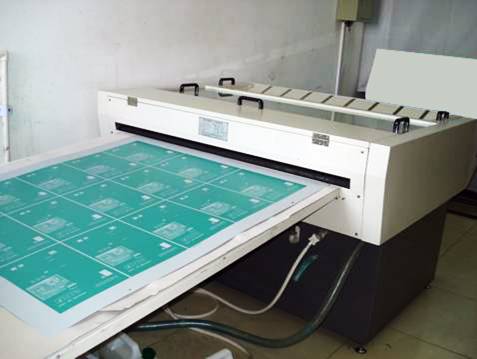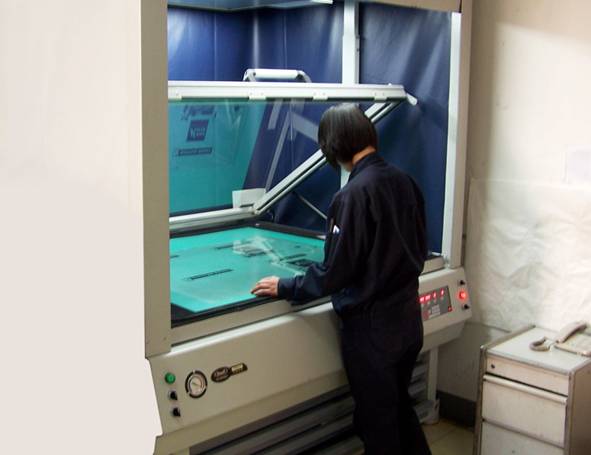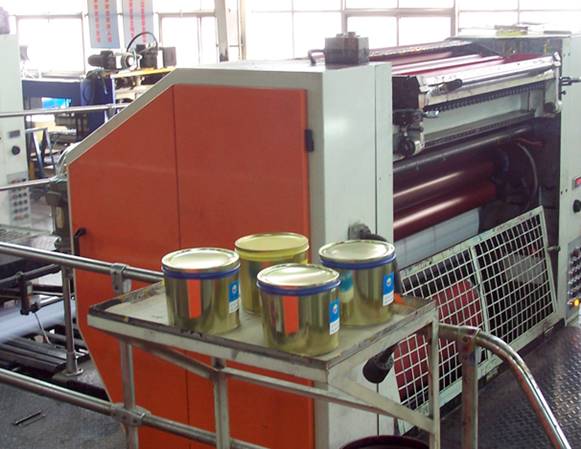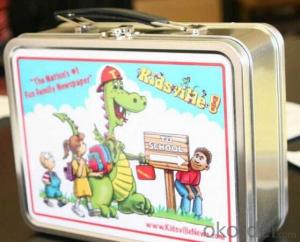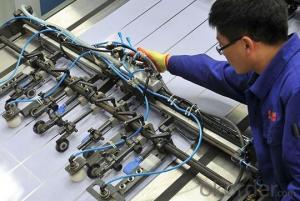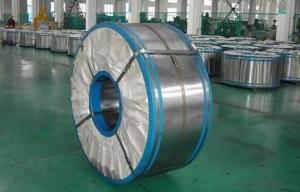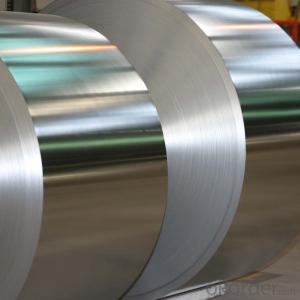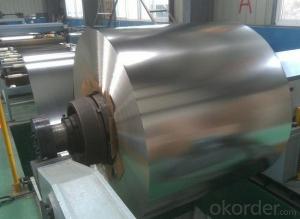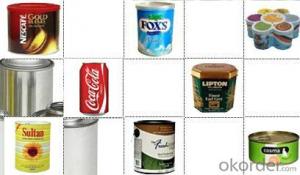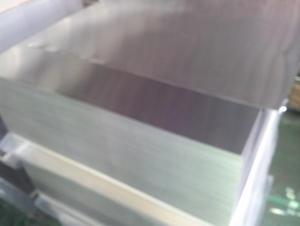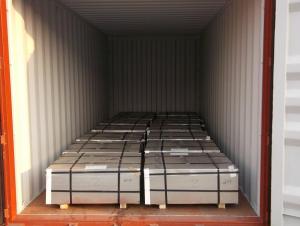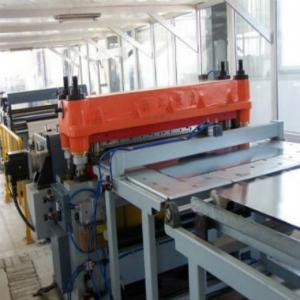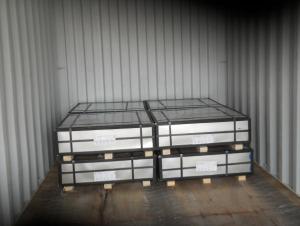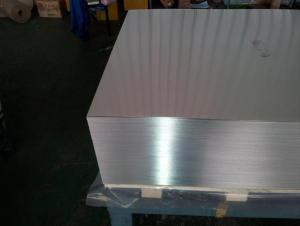Coated Sheet for Metal Packaging and Printing
- Loading Port:
- China main port
- Payment Terms:
- TT OR LC
- Min Order Qty:
- 25 m.t.
- Supply Capability:
- 30000 m.t./month
OKorder Service Pledge
OKorder Financial Service
You Might Also Like
Printed and Coated Tinplate for Metal Printing
1. Product Description:
Tinplate and TFS are widely used for making all types of containers such as artistic cans, tea cans, painting cans, chemical package cans and metal printing etc. Its applications are not limited to containers; recently, they have also been used for making electrical machinery parts and many other products.
2. Product Features:
Fully Automatic
Beautiful Appearance
Excellent Paintability & Printability
Excellent Formability & Strength
Excellent Corrosion Resistance
Excellent Solderability & Weldability
3. Product Parameters:
Technical standard | JISG3315 and GB/T24180 - 2009 (BS EN 10202:1990) |
Steel Type | MR / SPCC |
Thickness | From 0.15mm to 0.50mm (Tolerance +/- 0.01mm) |
Width | Normally 600-1050mm (Tolerance +3/-0 mm) |
Coating | Total chromium min 30mg/m2 max 140mg/m2 |
Temper & Annealing | T1-T5, DR7-8, TS230-TH435, T49-T65(+/- 4) |
Surface Treatment | Bright & Fine Stone & Stone & Silver & Matt |
Payment terms | Letter of Credit (L/C), Telegraphic transfer (T/T) |
Price terms | CFR & CIF price term |
Delivery time | Within 60 days after received L/C or T/T down payment |
Packing | High quality shipping packing which contains thin plastic film, rust-proof paper, metal cover, metal angles and strap sand pallet. |
Minimum order Quantity(MOQ) | 25 metric tons (1X 20'' container) |
4. FAQ:
Q1: What is your delivery time?
A: Generally, the delivery time is 70 days after receive the deposit, special specification may take more time.
Q2: What is the payment term?
A: We accept both T/T and L/C. Most customers pay by T/T.
Q3: What kind of after-sevices do you provide?
A: If it is not big problem, we can solve it by emails, phone etc. Or we went to your company to slove it in person.
5. Product Pictures:
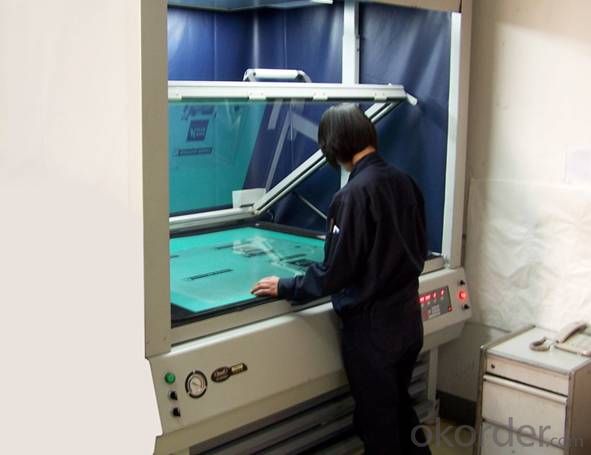

- Q: Can tinplate be used for packaging electronic devices?
- Yes, tinplate can be used for packaging electronic devices. Tinplate is a type of steel coated with a thin layer of tin, making it corrosion-resistant and suitable for protecting electronic devices from moisture and external damage. Additionally, tinplate provides good electrical conductivity and can be easily formed into various shapes, making it an ideal choice for packaging electronic devices.
- Q: How does tinplate perform in terms of gas barrier properties?
- Tinplate exhibits excellent gas barrier properties, making it an effective material for packaging perishable goods and preventing the ingress of oxygen, moisture, and other gases.
- Q: How does tinplate handle exposure to light?
- Tinplate handles exposure to light quite well. Due to its metallic properties, tinplate is not affected by light in terms of discoloration or degradation. It does not absorb light and is not prone to fading or yellowing. Therefore, tinplate can maintain its appearance and integrity even when exposed to light for extended periods.
- Q: How is tinplate stored and handled?
- Tinplate is typically stored in a dry and well-ventilated area to prevent rusting. It should be protected from moisture, direct sunlight, and extreme temperatures. When handling tinplate, it is important to wear gloves to avoid fingerprints and potential damage. It should be lifted carefully using appropriate equipment and stored in a manner that prevents scratching or bending.
- Q: How is tin coating applied to the steel substrate?
- Tin coating is typically applied to the steel substrate through a process called electroplating. In this method, the steel substrate is first cleaned and prepared to ensure proper adhesion of the tin coating. It is then immersed in an electrolyte bath containing tin salts, and an electrical current is applied. The current causes the tin ions to be reduced and deposited onto the steel surface, forming a thin layer of tin coating. This electroplating process helps to improve the corrosion resistance and appearance of the steel substrate.
- Q: What are the industry standards for tinplate?
- The industry standards for tinplate typically involve specifications related to the thickness, coating weight, and surface finish of the tinplate. These standards ensure the quality and performance of tinplate products, facilitating their use in various industries such as packaging, automotive, and construction.
- Q: Can tinplate be recycled?
- Yes, tinplate can be recycled. It is made of steel coated with a thin layer of tin, and both steel and tin can be recycled indefinitely without losing their properties. Recycling tinplate helps conserve resources and reduce waste.
- Q: How does tinplate handle exposure to gases and odors?
- Tinplate is highly resistant to gases and odors, making it an excellent material for packaging and storing sensitive products. It forms a protective barrier that prevents any unwanted smells or gases from penetrating the container, ensuring the integrity and quality of the contents inside.
- Q: What is the purpose of tin coating on tinplate?
- The purpose of tin coating on tinplate is to provide a protective layer that prevents the iron from rusting and extends the shelf life of the product. Additionally, the tin coating enhances the appearance of the tinplate, making it more visually appealing to consumers.
- Q: What are the advantages of using tinplate packaging?
- There are several advantages of using tinplate packaging. Firstly, tinplate is highly durable and resistant to corrosion, ensuring the long shelf life of products. Secondly, tinplate packaging provides excellent protection against light, moisture, and oxygen, preserving the quality and freshness of the contents. Additionally, tinplate is recyclable, making it an environmentally friendly option. Furthermore, tinplate packaging is versatile and can be easily shaped and printed, allowing for attractive and eye-catching designs. Lastly, tinplate is a cost-effective choice due to its long lifespan and high reusability.
Send your message to us
Coated Sheet for Metal Packaging and Printing
- Loading Port:
- China main port
- Payment Terms:
- TT OR LC
- Min Order Qty:
- 25 m.t.
- Supply Capability:
- 30000 m.t./month
OKorder Service Pledge
OKorder Financial Service
Similar products
Hot products
Hot Searches
Related keywords
